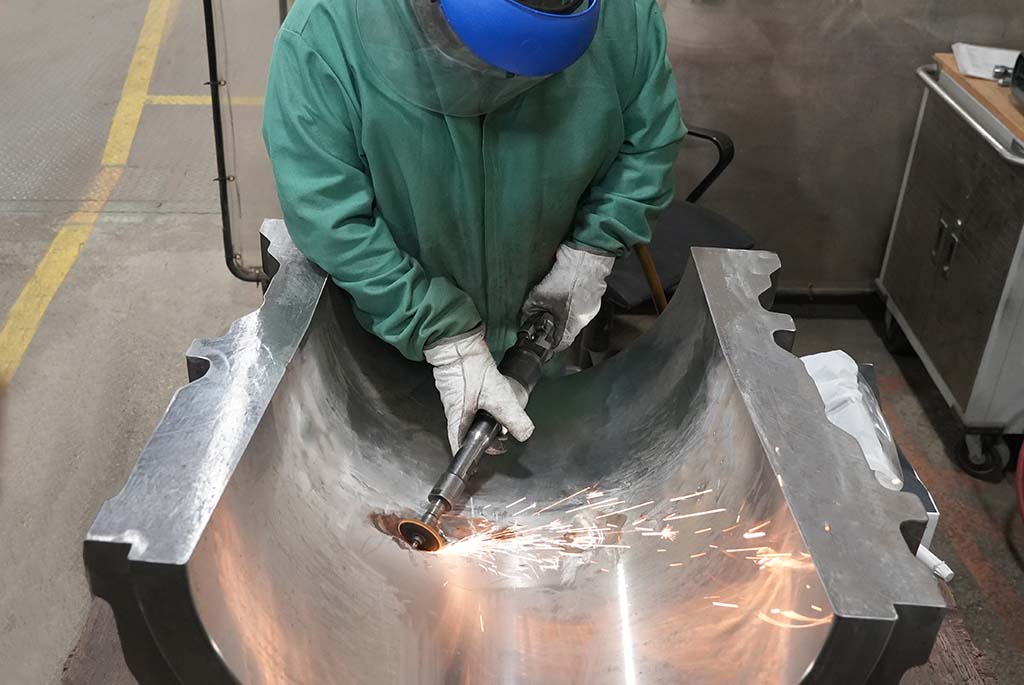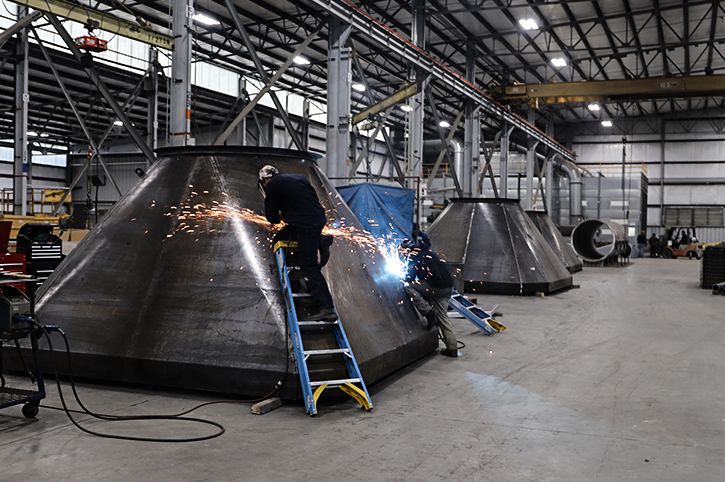Typical Welding Repair Issues and Exactly How to Address Them Successfully
Welding repair services typically run into a variety of concerns that can endanger the honesty of the end product. Typical issues include inadequate penetration, porosity, and misalignment, among others. Each issue presents one-of-a-kind obstacles that require details techniques for resolution. Understanding these issues is crucial for welders aiming to improve their skills and end results. This discussion will certainly explore these usual welding fixing concerns and effective techniques to address them.
Insufficient Infiltration
Insufficient penetration takes place when the weld steel falls short to completely fuse with the base material, resulting in weak joints and prospective structural failings. This concern commonly stems from not enough warmth input, wrong electrode angle, or improper welding rate. Welders may encounter inadequate infiltration as a result of a miscalculation of the necessary parameters for a details material density or type. In addition, contamination on the base product's surface can hinder efficient bonding, intensifying the problem. To attend to inadequate infiltration, welders should ensure appropriate settings on their equipment and keep a tidy work surface area. Normal assessment of welds is suggested to determine any shortages early, permitting timely improvements and the prevention of jeopardized architectural integrity in welded settings up.
Porosity
Porosity is a typical issue in welded joints that materializes as little gas bubbles caught within the weld steel. This issue can jeopardize the honesty of the weld, bring about reduced strength and possible failing under stress. Montana Mobile Welding and Repair Belgrade Fabrication. Porosity normally emerges from contamination, dampness, or inappropriate welding techniques, which enable gases to get away into the liquified weld swimming pool. To resolve porosity, welders should ensure correct surface area prep work, preserve a clean workplace, and utilize ideal welding parameters. Additionally, picking the best filler material and securing gas can minimize gas entrapment. Regular assessment and screening of welds can aid recognize porosity early, ensuring timely restorative activities are taken, thus maintaining the quality and dependability of the welded structure
Misalignment
Imbalance in welding can occur from different factors, including improper setup and thermal expansion. Comprehending the root causes is crucial for reliable resolution. Numerous improvement techniques are available to straighten parts and assure structural stability.
Sources of Misalignment
Welding misalignment typically comes from a variety of underlying issues that can jeopardize structural stability. One main cause is inappropriate fit-up of elements before welding, which can bring about gaps and irregular surface areas. Variations in thermal development throughout the welding procedure can additionally cause distortion, particularly if the materials being joined have different coefficients of development. In addition, inadequate fixturing and securing might fall short to hold parts safely in place, resulting in movement during welding. Badly conserved equipment, including welding makers and devices, may present disparities in the weld grain, additional adding to misalignment. Ultimately, operator mistake, originating from not enough training or experience, can additionally play a substantial role in developing misaligned welds.
Adjustment Techniques Offered
Attending to imbalance efficiently needs a combination of restorative strategies tailored to the particular concerns handy. One typical approach is using fixtures or jigs to hold components in the right placement throughout welding, making sure constant placement. In addition, preheating the materials can aid lower distortion and improve fit-up. For significant misalignment, mechanical adjustment strategies, such as utilizing hydraulic jacks or clamps, can be used to correct the placement before welding. Post-weld heat therapy may additionally be essential to alleviate tensions triggered by imbalance. Mindful examination and modification throughout the setup phase can avoid imbalance concerns from becoming considerable troubles, advertising a smoother welding process and improving general architectural honesty.
Distortion
Distortion is an usual obstacle in welding that can occur from different variables, consisting of uneven cooling and heating. Comprehending the root causes of distortion is vital for applying effective avoidance strategies. Resolving this concern not only enhances architectural honesty but also boosts the overall high quality of the weld.
Sources of Distortion
When based on the intense warmth of welding, products usually undertake modifications that can cause distortion. This phenomenon mainly emerges from thermal growth and contraction during the welding procedure. As the weld area warms up, the material increases; upon air conditioning, it gets, which can produce internal stresses. Additionally, uneven heating across a workpiece can aggravate these stress and anxieties, resulting in bending or flexing. The kind of product likewise plays a considerable role; metals with varying thermal conductivity and coefficients of growth may react in a different way, leading to unpredictable distortions. Poor joint layout and insufficient fixturing can contribute to imbalance throughout welding, increasing the probability of distortion. Recognizing these causes is essential for effective welding repair service and avoidance approaches.
Avoidance Techniques
Effective avoidance techniques for distortion throughout welding concentrate on controlling warmth input and making sure proper joint style. Maintaining a constant warmth input aids to decrease thermal growth and contraction, which can result in distortion. Using methods such as preheating the work surface can also lower the temperature level gradient, advertising uniform home heating. Furthermore, selecting proper joint designs, such as T-joints or lap joints, can improve stability and reduce tension concentrations. Executing correct fixturing to safeguard the work surfaces in position further help in keeping alignment throughout the welding process. Ultimately, staggered welding series can distribute warmth much more uniformly, stopping local distortion. By using these strategies, welders can considerably lower the likelihood of distortion and boost the overall top quality of their welds.
Fracturing
Breaking is an usual concern come across in welding repairs, often resulting from different factors such as improper air conditioning rates, product option, or insufficient joint preparation. The occurrence of cracks can substantially compromise the integrity of the weld, causing potential failings during operation. To resolve this issue, welders have to initially analyze the source, ensuring that products work and appropriately selected for the certain application. In addition, controlling the air steel welding near me conditioning price during the welding procedure is essential; fast cooling can induce stress and lead to cracking. Correct joint style and preparation additionally add to lessening the risk. Implementing these techniques can improve weld high quality and sturdiness, inevitably minimizing the probability of cracking in completed weldments.

Incomplete Fusion
A significant problem in welding fixings is incomplete blend, which happens when the weld steel does not effectively bond with the base product or previous weld passes - Montana Mobile Welding and Repair Belgrade. This flaw can clarke mig welder lead to weaknesses in the joint, potentially endangering the stability of the welded framework. Elements contributing to insufficient fusion include not enough warmth input, incorrect welding strategy, and contamination of the surfaces being signed up with. To address this problem efficiently, welders must assure proper pre-weld cleaning and surface preparation, along with readjust their welding criteria to achieve adequate penetration and blend. Normal inspection during the welding process can likewise aid recognize insufficient blend early, enabling timely restorative actions to boost the total quality of the weld
Overheating
While welding repairs can enhance structural integrity, overheating presents a considerable difficulty that can cause material destruction. Too much warmth throughout welding can modify the mechanical residential properties of metals, resulting in decreased toughness, boosted brittleness, and warping. This phenomenon is specifically essential in high-stress applications where architectural integrity is vital. Determining overheating can involve aesthetic examinations for discoloration or distortion, as well as checking temperature throughout the welding procedure. To minimize the dangers linked with overheating, welders ought to use appropriate methods, such as controlling warm input, adjusting traveling rate, and using suitable filler products. Furthermore, executing pre- and post-weld heat therapies can help bring back material residential or commercial properties and boost the general high quality of the repair, making certain long-lasting performance and security.
Frequently Asked Inquiries
What Are the Common Indicators of a Welding Defect?

Just How Can I Examine My Welds for High quality?
To check welds for high quality, one can make use of visual evaluations, ultrasonic testing, and radiographic approaches. Each strategy assures architectural stability, identifies problems, and confirms adherence to defined criteria, eventually boosting the integrity of the bonded joints.
What Security Precautions Should I Take While Welding?
When welding, one should focus on security by using proper individual safety equipment, ensuring proper air flow, protecting flammable products away, preserving a clean workspace, and knowing surroundings to prevent injuries and crashes.
Can I Repair a Weld Without Renovating the Entire Joint?
Repairing a weld without remodeling the entire joint is possible, relying on the damages (Belgrade Welding). Methods such as grinding, including filler material, or utilizing a welding process can efficiently address i was reading this details defects while preserving the bordering structure
What Tools Are Crucial for Efficient Welding Repairs?
Vital devices for efficient welding repair work include a welding machine, cable brush, mill, protective gear, clamps, and filler materials. Each device plays a vital duty in guaranteeing high quality and safety and security during the repair work process. Porosity typically develops from contamination, dampness, or incorrect welding techniques, which permit gases to escape right into the liquified weld pool. Inadequately maintained devices, including welding equipments and devices, may present disparities in the weld grain, additional adding to imbalance. When subjected to the intense warm of welding, products frequently go through changes that can lead to distortion. Fracturing is an usual issue come across in welding fixings, often resulting from various elements such as incorrect cooling prices, product choice, or insufficient joint prep work. A substantial concern in welding fixings is incomplete combination, which takes place when the weld steel does not adequately bond with the base material or previous weld passes.